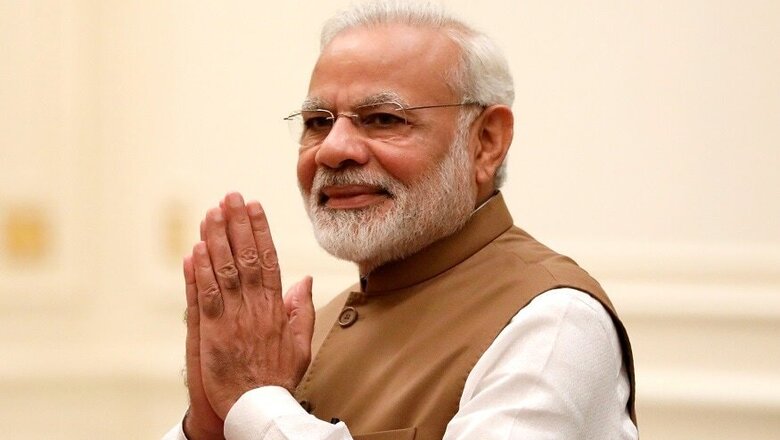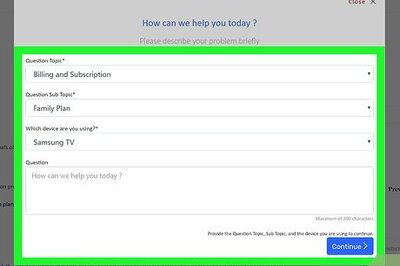
views
It's official: Narendra Modi is the most followed political leader on social media (97 million) and has twice as many Facebook fans as Donald Trump. Conventional social media is thus a readymade platform for the BJP's 2019 electoral campaign. But the cutting edge of voter outreach this time could well be the controversial NaMo app.
The electoral efficacy of the app is already being road-tested in Karnataka. In April, it was deployed in the PM’s interaction with BJP candidates and workers. Last week, he spoke to Karnataka farmers through the app. The BJP Mahila Morcha is next on the list. In all likelihood, the app will also be utilised in microtargeting voters, by showcasing the 224 constituency-level manifestoes crafted by the BJP through its influencers.
Modi's prescient grasp of the shape of tech-to-come enhances his wizardly communication skills. His idea, back in 2014, to create a direct interface with voters was nothing short of visionary. At a time when terms like “datamining”, “analytics” and “predictive market segmentation” had just entered the journalistic vocabulary, he was already thinking ahead, to the 133 million new voters in 2019. Most of them post-millenial digital natives, comfortable with technology.
The PMO app contest engaged hundreds of bright young minds, by-and-large engineering students who participated in the citizen engagement platform, MyGov. A group of six kids styling themselves 'Team Sanskriti' were given the privilege of designing the app. The idea of using budding techies to design useful software would later be extrapolated to the 'Smart India Hackathon'. The PM and by extension, the government, loves apps: BHIM, Umang, myPassport Seva, MyGov, India voters' list, OnlineRTI, Incredible India, mKavach, Khoya Paya. Just app it!
Launched in June of 2015, the NaMo app became a hit post-demonetisation. The PM urged the public to download the app in order to give him a “first-hand view on the decision taken regarding currency notes”, thereby expanding his user-base and projecting himself as a people-friendly, accessible leader. The app figured in the list of the top 20 downloads in November, 2016, trending on Google Play and the AppleApp store. Not surprisingly, more than 90 per cent of the five lakh people who took the survey supported demonetisation.
The PM has promoted his app relentlessly on his Mann ki Baat radio show and now, through his book “Exam Warriors”. Scan the QR codes in the book and presto, you can post your comments on the app. The book's bestseller status is assured, with BJP-ruled state governments already placing orders. And that means more traction for the NaMo app.
For BJP workers, the app is mandatory. Last heard, it had a user base of over 10 million. Not large enough to satisfy BJP president Amit Shah, though. With characteristic firmness, he informed the party's national executive earlier this year that BJP units in each district of the country would have to ensure 100,000 downloads, so as to achieve the target of 50 million. “Do not take this as a suggestion. Accountability will be ensured and each district is responsible”, he reportedly declared.
Has the opposition grasped the potential of the NaMo app, which bypasses conventional social media? Congress president Rahul Gandhi certainly has. He panned it a couple of months ago, after security concerns vis-a-vis the app were raised on Twitter. In the backdrop of the Facebook-Cambridge Analytica revelations, the Congress was facing heat for allegedly employing the data brokerage firm for its election campaigns. Suspicions about the NaMo app were a handy way of striking back.
Experts felt that the app asked for too many permissions and alleged that it was subject to data leakage. Rahul Gandhi pointed out that although it was billed as an official government app, it was under the control of the BJP. Leveraging political power to promote Brand Modi and build a personal database was a tad unfair! The BJP vociferously defended the app and denied any possibility of data theft, because “it was stored on Indian servers”. The #DeleteNaMoApp thread died out quickly, perhaps because security concerns prompted the Congress to take down its own app.
The sheer reach of the NaMo app is scary for the Congress. Through surveys and interactive “to-do tasks” it can create granular (detailed) data, which facilitates zeroing in on voters – their concerns and where and how they will vote. This makes it easier to send targeted messages, identify supporters and get them to the booth.
The BJP has already built up a substantial database through its phone-based membership drive in 2014, during which it claims to have enrolled 100 million people. Even allowing for large-scale duplication and frivolous calls, this represents an impressive list of names and phone numbers.
The NaMo app introduces a new variable in an already complex electoral eco-system where it is increasingly difficult to predict outcomes.
In Karnataka, conventional wisdom says the Congress has a definite edge, but will the Wizard of Apps pull a rabbit out of his pagdi?
(The writer is a senior journalist. Views are personal)



















Comments
0 comment